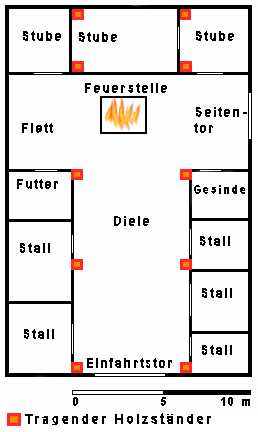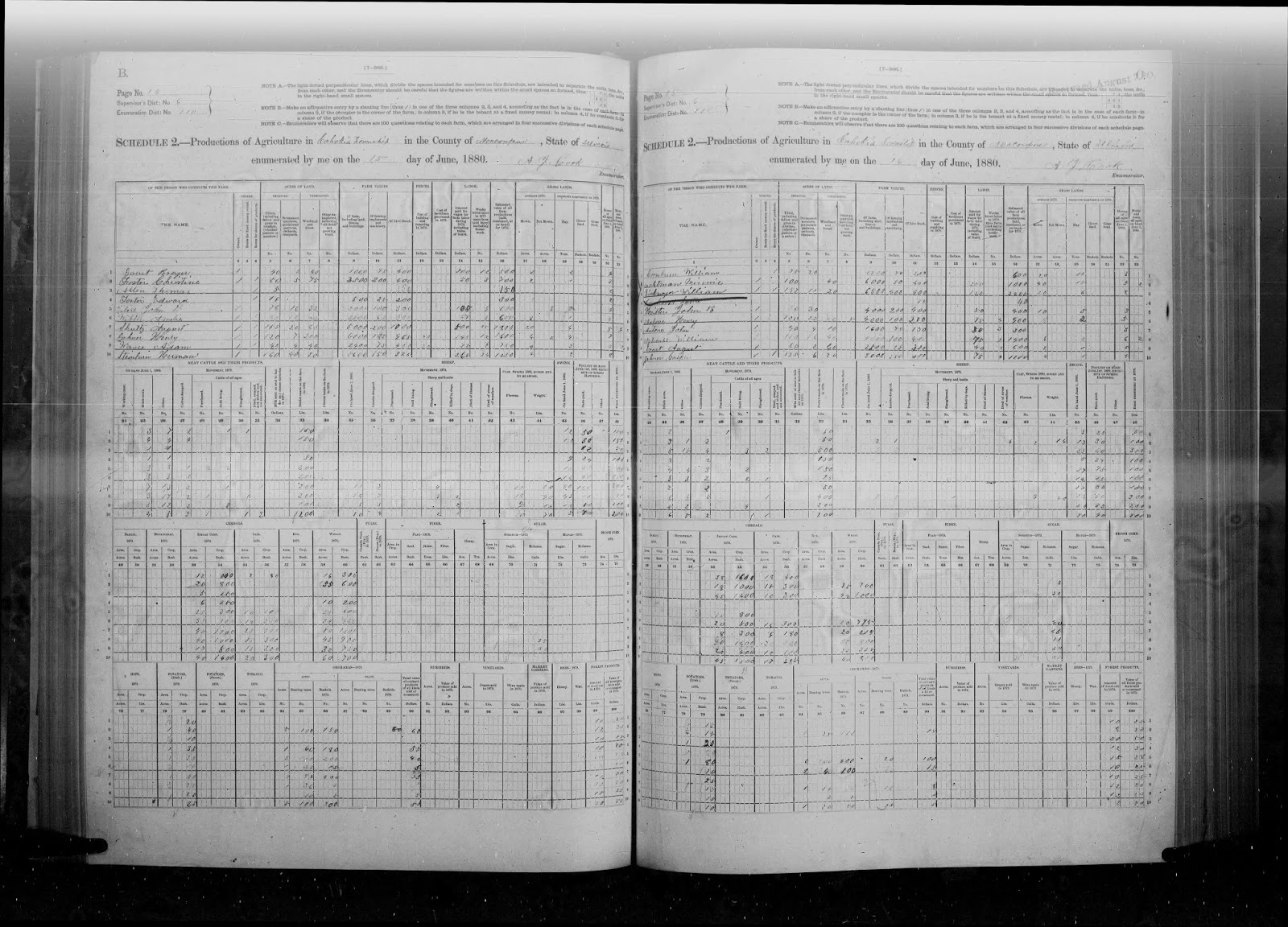Dakota Territory of the 1880's was the frontier... but was it a lawless frontier? Was mob justice the way of the west?
I had access to a new collection of Mitchell, SD newspapers going back to 1885 a couple weeks ago, with a really good search engine for finding names in the articles. As I went through the results for Geidel a mystery started to emerge... a murder mystery.
The Bechtel Murder Trial Comes To a Close
The Mitchell Daily Republican
Friday April 2, 1886
Page 1 (Accessed from http://newspaperarchive.com/)
"The attention of the court was occupied all of Thursday in the trial of R. S. Imelli and others, who were indicted last July (1885) for participating in a riot on or about May 1st 1884... the principle [sic] witness of the prosecution is Leonard Bechtel who says that he was at his brother's house on his claim in Davison County and that a body of men, ten or more in number came there and demanded that they should tell them the whereabouts of John Smith, who had been missing for about two weeks.... they came from the direction of Charles Smith's pace. Geidel came up and tied his horse and said: "we've got you now."
"The case went to the jury last night about 9 o'clock and up to the time of going to press nothing has been heard from them."
A Geidel involved in a murder trial? This gets interesting.
What happened in 1884? Who is this Geidel? Unfortunately, the article of the trial said "as the particulars of the case have already been given several times in the
Republican it is unneccessary to go over them in detail." So there's nothing in this article, and the other mentions of Bechtel and Imelli included in the online collection (from 1885 on) are just short pieces about the indictment and further minor proceedings.
Off to Google to see what we can find.The best source comes from a reprint hosted on the
Davison County section of Genealogy Trails from the Daily Huronite, February 9, 1886, page 1.
The Enemy Creek Tragedy
"Mitchell,
Feb. 8.—Sheriff Allerton returned to-night from Washington territory with R.S. Imelli, a German jeweler, who has been under indictment here for a year past for riot and assault. In March, 1884, a party named John Schmidt, living on a claim near Enemy creek, about nine miles south of Mitchell, disappeared suddenly and no trace was ever found of him. His children were transferred to the neighbors and his property sold. One of his neighbors named Mike Bechtel was suspected of the murder, and several weeks after Bechtel’s body badly mutilated and bound to heavy stones, was discovered in what was known as the “deep hole” in the James river, several miles from Schmidt’s house. It afterwards transpired that a mob of Schmidt’s neighbors had gotten together and partially hung Bechtel several times, stabbing him with a bayonet, and otherwise tried to make him confess that he had murdered Schmidt. This he did not do, and threw his body into the river. It was claimed that Imelli, who had a grudge against Bechtel, had led this mob. Sufficient information leaded out upon which the grand jury indicted Max Geidel, Charles Smith, Joseph Scheick, George Krug, Fred Esser, Frank Young, Chas. Kolley and R. S. Imelli. These men, except the last, gave bail in $500 and are now awaiting trial. Imelli, hearing a warrant was out against him, fled. The sheriff has been long on his track, and at last found him about two weeks since at a small town in Washington Territory carrying on the jewelry business under a slight change in his name. He gave bail tonight in the sum of $500. He has engaged Dillon & Preston, of this city, to defend him. The case will be tried at the March term of court."
Where
Sherlock Holmes would say to examine the scene of the crime; it looks like we have two crimes here- the disappearance of John Schmidt and the riot/assault at the Bechtel farm. Since these are early in the days of white settlement in Dakota, the records from the General Land Office in the Bureau of Land Management will help.
I searched the records at
http://www.glorecords.blm.gov/ for Davison County, South Dakota to get the legal description of any claims for these individuals, then used
Earthpoint to get the locations in Google Earth for each claim. Opening the KMZ file if you have
Google Earth installed will fly you to that location in Google Earth. Note these dates are when the claim was "proved" up and the land was free and clear to them- either by meeting the homesteading requirements, or outright purchase.
*Since Bechtel is deceased at this point, we have to assume this is to his heirs.
Given the crimes happen just north of Ethan, SD, we're a significant distance from the settlements of the Geidels that this blog has included up to now. So we have a couple of options to consider:
1.
Coincidence. Since this is the newly opened land to settlement, and the 1870's and 1880's are a big wave of Germans, so it's pure coincidence that another Geidl was here.
2.
Mix-up. It's hard enough now to keep these names straight- it may be a typo in the newspaper that never got corrected.
3. Cousins.
A possible match?
In the
1900 Census we find a Max Geidl living in Nez Perce County, Idaho; married with children.
| Name |
Role |
Gender |
Born |
Birthplace |
| Max Geidl |
Head |
M |
Aug 1845 |
Germany |
| Walalburga Geidl |
Wife |
F |
Oct 1847 |
Germany |
| Joseph Geidl |
Son |
M |
June 1875 |
Illinois |
| Maggie Geidl |
Daughter |
F |
Nov 1877 |
South Dakota |
| Wally Geidl |
Daughter |
F |
June 1880 |
South Dakota |
| Max Geidl |
Son |
M |
Feb 1880 |
South Dakota |
| John Geidl |
Son |
M |
Oct 1882 |
South Dakota |
| Tracy Geidl |
Daughter |
F |
July 1884 |
South Dakota |
| Anna Geidl |
Daughter |
F |
Apr 1886 |
South Dakota |
So we have a Max Geidl with kids who were born in South Dakota between 1877 and 1886. Googling his wife's unique name lead to
Anna's tombstone record on Findagrave.com, which links back to the the
1880 census entry for the family living in rural Hutchinson County, Dakota Territory- east of Tripp. The same Findagrave article lists Max's birthpace as Rudershausen in Niedersachsen, which is 90 miles from the area the Geidel family came from. Coming from hometowns 90 miles apart would appear to dismiss any close relationship between the two families, especially since the Geidels immigrated some 30 years earlier.
Epilogue
The next day's Mitchell paper reports the eight were acquitted due to lack of evidence. When Max Geidl leaves Dakota Territory is unknown, but he shows up in 1900 in Idaho. Even if found not guilty, staying around the area would have been tough. Both the Schmidt and Bechtel murders were never solved.







